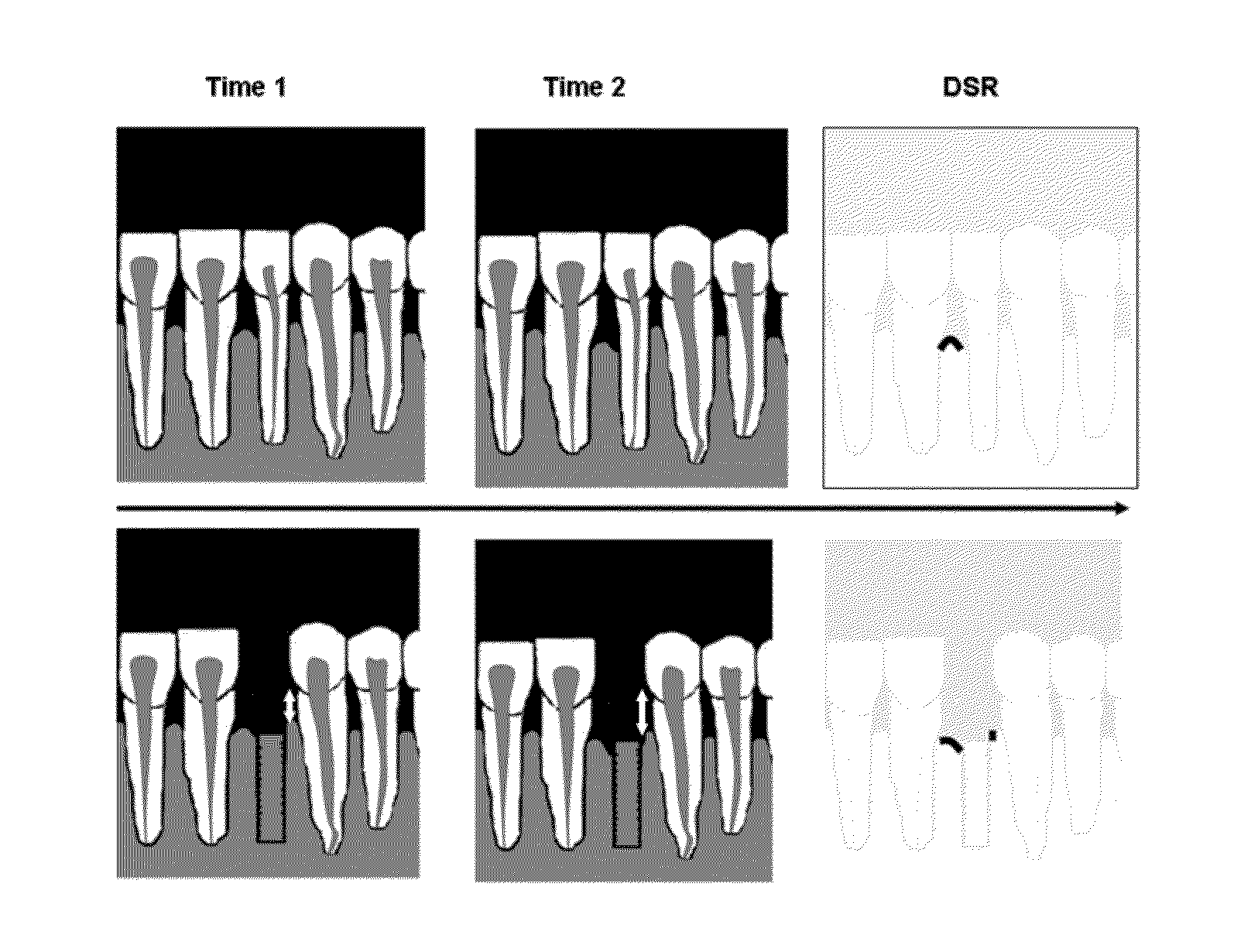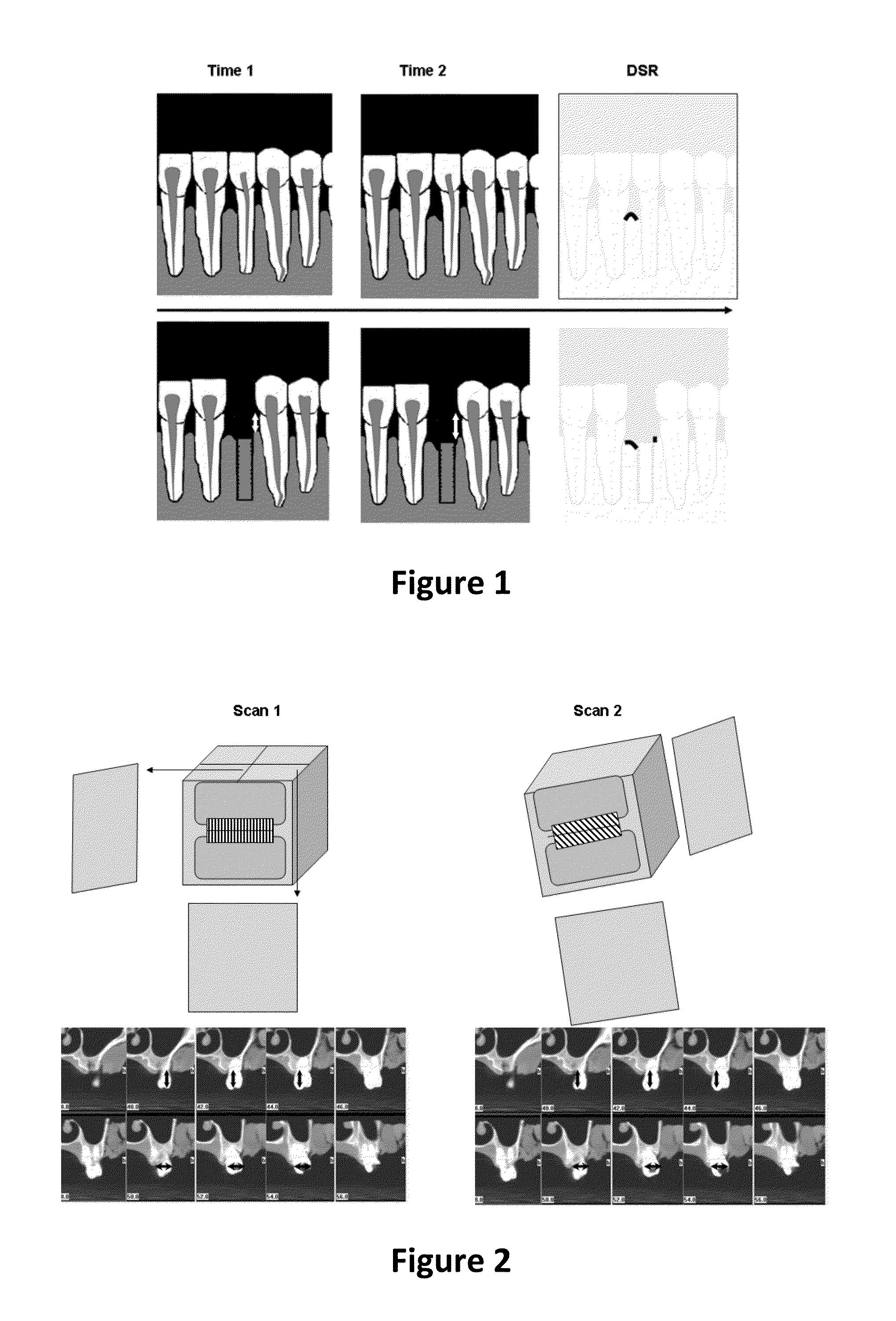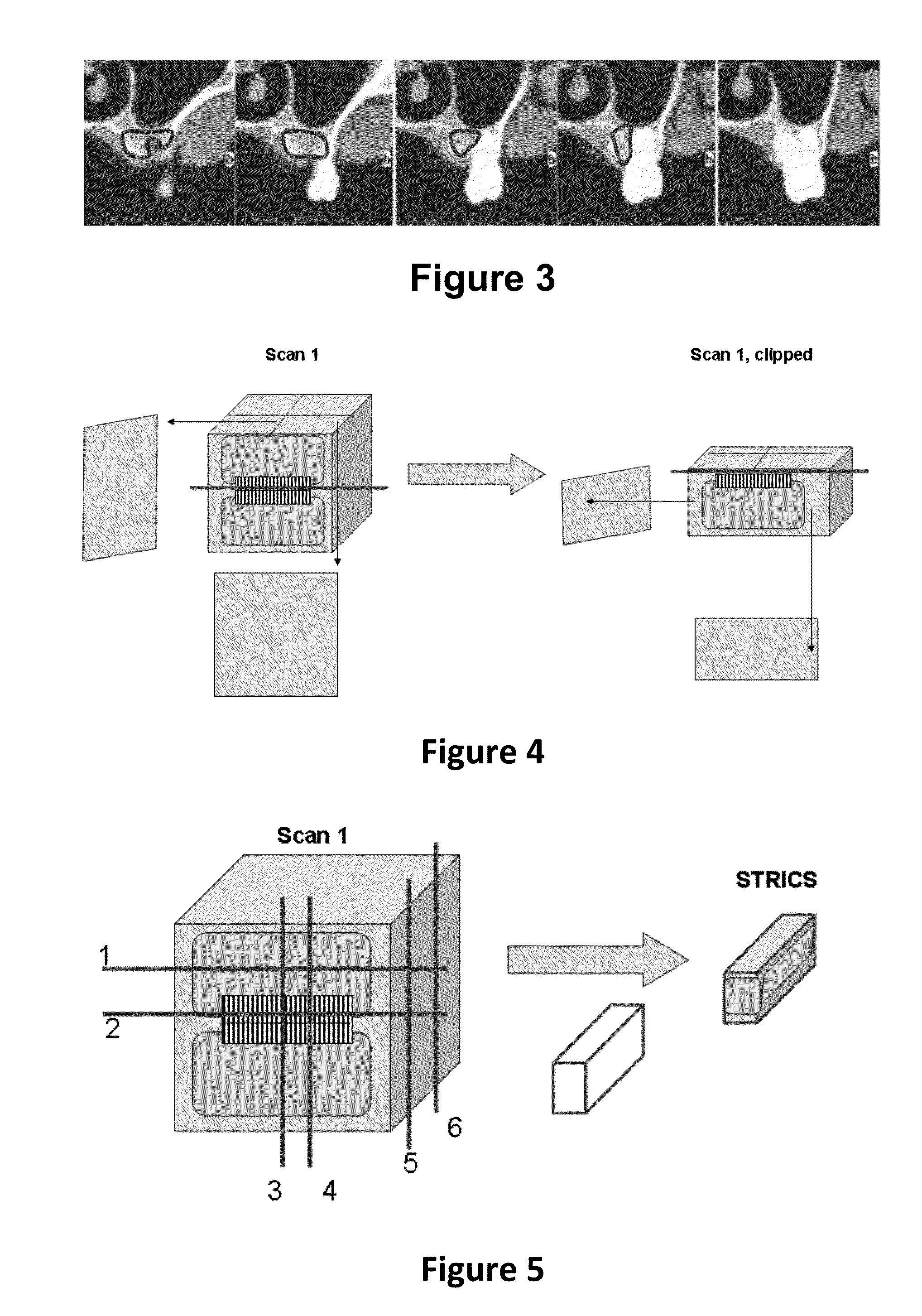This bone loss (resulting in pocket formation between the teeth and the remaining soft tissues or bone) may affect one to all teeth and eventually, when left untreated, lead to
tooth loss.
Furthermore,
bacteria in the plaque may cause caries reaching the pulpal tissues of the teeth and cause periapical (around the apex or root point of the tooth)
inflammation with periapical bone loss.
However, these radiographs project all periodontal structures on top of each other, which make differentiation of buccal and oral bone hardly impossible.
In addition, if the x-
ray's are not pointed perpendicular to the
receptor, bone levels can be misinterpreted because of projection errors.
This often hinders a true distinction between the buccal and lingual cortical plate and complicates the evaluation of periodontal bone defects, especially the infrabony lesions, also denoted as craters, and furcation involvements (bone loss at the furcation).
To determine the result of these therapies, the current 2D projection radiographs form an additional problem.
Unfortunately, it is critical to use the same
projection angle at both moments, so individualized bite blocks need to be fabricated per patient to follow up the bone.
Also, this digital subtraction
radiography (DSR) does not provide any 3D information.
The same principle applies when investigating bone lesions around the root end (apex) of a tooth, where 2D projection radiographs often causes misdiagnosis since the buccal and oral bony plates may project onto these local lesions inside the bone.
Although the critical importance of reducing projection errors with two-dimensional radiographs and using an optimal radiographic protocol, the current literature describing radiographic follow-up in details is sparse.
Inter- and intra-observer variability is seldom explored and new three-dimensional techniques are still not commonly used.
Implant-therapy has several obstacles that can influence its use or success-rate.
. . but contradictory results are often demonstrated.
This indicates that the choice of augmentation and
implant therapy is very complex, and that in addition it is complicated by the continuous technological innovation—on
implant as well as
bone augmentation level.
Unfortunately, volumetric quantification of bone still has only been employed a few times and rarely for volumetric follow-up of bone loss.
Often widths and heights are measured on 2D slices, as e.g. discussed in Chen et al. J. Periodontal 2008 (79) 401, which is better than on projection radiographs, but still this shows a severe limitation since all the above bone remodelling processes are in three dimensions.
This is very cumbersome.
For instance, manual slice by slice segmentation of structures can be very user dependent and
time consuming, especially when two volumes in time need to be processed.
Especially the segmentation of bone grafts can be quite difficult because of limited
visibility on (CB)CT volumes, as indicated for example in Beaman et al.
It thus becomes difficult using the existing methods for answering for example the question which bone graft method of a given selection results in less bone loss.
However, this bone remodelling is a dynamics process over time, which needs an accurate follow-up.
In addition to the fact that this is only a part of the bone loss that can be assessed (height loss at 1 point while the volume should be assessed), projection errors may project the bone at differently than the actual situation.
In addition, horizontal measurements can now also be made, where the width (arrows in FIG. 2) of the
alveolar ridge can be measured, which is not possible on a 2D projection.
The major problem here is that a lot of measurements per tooth need to happen, with again the precise
standardization required.
This makes assessment of the whole volume almost impossible.
Again, this results in insufficient volume information for follow-up and it is rather
time consuming.
Because of all these limitations it is also very difficult to validate periodontal therapies—from rootplaning to bone augmentation and implant therapy.
This makes it of course also very difficult to precisely follow-up periodontal patients.
Drawbacks are of course the intensive labour required, operator bias and difficulty in obtaining reproducible results.
In this way, volume 1 and 2 will both be influenced by these limitations, resulting in inadequate follow-up of bone volumes.
 Login to View More
Login to View More  Login to View More
Login to View More 


